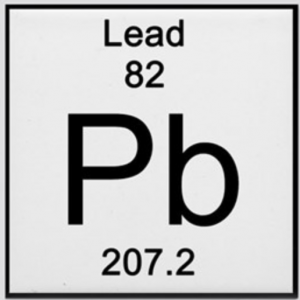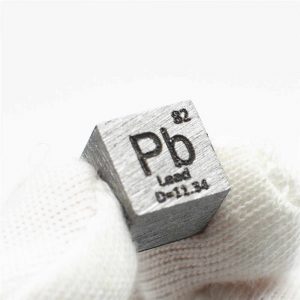In this guide, we tell you all you need to know about this pollutant and how to remove lead from tap water, at home.
How does Lead Enter Our Drinking Water?
Lead is a naturally occurring element in the Earth’s crust. But, it enters the tap water through plumbing pipes, faucets, and fixtures. When water with high acidity or low mineral content flows through plumbing fixtures, it corrodes the lead present in them, pulling it into the water stream.
While older homes (read pre-1986) have lead supply pipes that are the main culprit, modern homes have chrome-plated brass faucets and lead soldering that leach lead over time.
This leaching or corrosion of lead is made worse by several factors such as the pH and temperature of the water, age of supply pipes, the duration for which the water stays in the pipes, etc.
What is Lead?

And for those who want to know more about this element, well, it’s a toxic element found on Earth’s surface. We bet you’ve heard or read about it if you have done even a bit of research on water filters.
Lead is one of the heavy metals that water filters often promise to remove from tap water.
While it is found across the environment, most of it enters the human system from man-made activities such as the burning of fossil fuels, mining, and disposal of lead-containing waste such as lead batteries.
The increased awareness about the ill-effects of lead in the human body has made us look for lead-free alternatives wherever possible or those with reduced lead content.
The Dangers of Lead
The fact that this heavy metal is toxic to human life even at low exposure levels is enough to raise alarm bells. However, this section will give you a detailed view of the damage this can cause to different biological systems.
- Children and fetuses at high-risk: Exposure to the minutest level of lead can be far more detrimental to children and fetuses than it can be for adults.
It can hamper brain development resulting in reduced IQ, reduction in attention span, and increased anti-social behavior. It also impacts neurological functions and, the worst part is that. the damage is irreversible.
- Effect on expecting women and newborns: Pregnant women exposed to lead during pregnancy have been found to deliver babies that are smaller or premature. It can also increase the risk of miscarriage.
- Effect on adults: Lead is also known to have a delirious impact on other adults. Increased blood pressure and incidence of hypertension leading to cardiovascular illnesses are some of the effects of the ingestion of lead. A decline in renal function and reproductive health are some of the other impacts of lead.
Thus, lead has the potential to adversely affect multiple biological systems and cause long-term damage, most of which are irreversible.
The sanest way, thus, is to stay away from its ingestion, in any form. The most widely available source of lead being tap water is, therefore, the most important to consider when trying to keep the toxin out of our life.
Is Leaded Water Safe to Drink?
Of course not!
Lead is so harmful to the biological systems that countries across the world have worked towards making everything, from fuels to paints, lead-free.
When such is the drive to keep it out, water containing lead is definitely a big NO.
Under the directive of the Safe Drinking Water Act of 1974, EPA has set the Maximum Contaminant Level (MCL) of lead at zero. This level was set based on scientific evidence that shows there is no ‘safe-level’ of exposure to lead.
Based on this, EPA has established a treatment technique for lead that is enforced across municipal water systems.
Despite this, for the little lead that enters your drinking water, due to plumbing corrosion or any lax from the authorities, there are methods you can employ at home to remove lead from tap water.
How to Remove Lead from Tap Water?
And now, for the most important part of this ‘How-to’ guide.
Here are details of some of the different ways to tackle lead in your drinking water and keep your family safe against the ill-impacts of this heavy metal.
Flush it Out
The lead content in your tap water increases with the length of time that it spends in contact with the plumbing fixtures.
If the tap water has not been running for more than six hours, it is advisable to leave the tap on for a minute or two and allow the water to run. This is said to flush out the lead built up due to water standing in the pipes for long hours.
| Pros | Cons |
| Inexpensive | Water wastage |
| Maintenance-free | Every faucet needs to be flushed separately |
Hot v/s Cold
The solubility of lead in water increases with an increase in temperature. Hot tap water, thus, holds more lead than cold water and should be avoided for drinking or cooking.
Alternatively, warming cold water for drinking or cooking is one way to minimize the entry of lead in water.
| Pros | Cons |
| Minimizes entry of lead from plumbing | Time-consuming |
| Affordable |
Activated Carbon Filters
Another inexpensive way to get rid of lead from tap water is to use faucet-mounted activated carbon filters.
The carbon filter works by adsorption. This process involves the lead particles getting attracted to the carbon and getting stuck to it but not chemically altering their form.
As a result, they are left on the filter while water passes through it.
While this can be achieved by most carbon filters, activated carbon filters do it better. Such filters have a small pore size and greater than usual surface area. As a result, it can hold a larger quantity of impurity thereby making the filtration far more effective.
However, not all filters are made equal. When you look for an activated carbon filter, make sure that it is certified by the NSF or WQA and meets Standard 53, for lead, and replace filters as per manufacturer’s guidelines to ensure a lead-free supply of water.
| Pros | Cons |
| Highly effective | Care must be taken while deciding on which filter to purchase |
| Relatively inexpensive | Requires replacement as per seller recommendation |
Reverse Osmosis
Though more expensive than all other methods on this list, reverse osmosis is a foolproof method to get rid of lead from drinking water.
Reverse osmosis filters work by forcing the water through a membrane that blocks larger ions lead and iron while allowing water to pass through it.
Being relatively small, point-of-use systems sit under the kitchen sink or next to the kitchen faucet to eliminate nearly 98% of all lead in tap water.
Though they are notorious for wasting gallons of water for each gallon of filtered water they produce, they are one of the best long-term and cost-effective methods for lead removal from tap water.
| Pros | Cons |
| The cost-effective and long-term solution | Does not work if the lead concentration is more than 150 ppb |
| Efficient at lead removal | Causes water wastage |
| Effortless | RO systems can be pricey |
FAQ on Lead Removal
We are sure you still have more questions that you want answers to. So here, we have a list of frequently asked questions that we’ve compiled just for you.
Does reverse osmosis remove lead?
Yes. RO filters remove 98% of all lead in tap water leaving it healthier than when it entered it. To learn more, check out this guide.
Does boiling water remove lead?
No. Lead is a non-volatile element that is not evaporated upon heating/boiling water. Rather, its concentration increases upon heating.
Does Brita remove lead from water?
Brita Faucet Systems and Brita Longlast Filters are certified to remove 99% of lead found in tap water. Learn more on our review of Brita Longlast Filter and Brita Faucet.
Does Pur remove lead from water?
Yes. But, it is the lead-reducing filter cartridges that remove lead in the pitchers that remove the contaminant. You can refer to our PUR Faucet and PUR pitcher review to learn more
Does distillation remove lead from water?
Yes. Distillation can remove almost all impurities from water, lead included.
Do water filters remove lead from water?
Most of the water filters do remove lead from water. It is advisable to refer to the manufacturer’s site and look for the list of contaminants that their water filter removes before making the purchase.
Conclusion
Lead is a toxic element that cannot be allowed in drinking water no matter how low its concentration. While it has some seriously harmful health hazards for all age groups, it is most hazardous to growing children and fetuses.
Since old plumbing pipes are the most common source of lead in tap water, flushing the water is an inexpensive and easily applicable method to remove lead from tap water.
However, reverse osmosis and activated carbon filters are the most effective ways to keep the toxic heavy metal out.
In this guide, we have tried to compile all important information about this water pollutant to answer your most common doubts surrounding the topic.
Let us know what you think, in the comments below, and don’t forget to share this guide with your family and friends if you find it useful.
